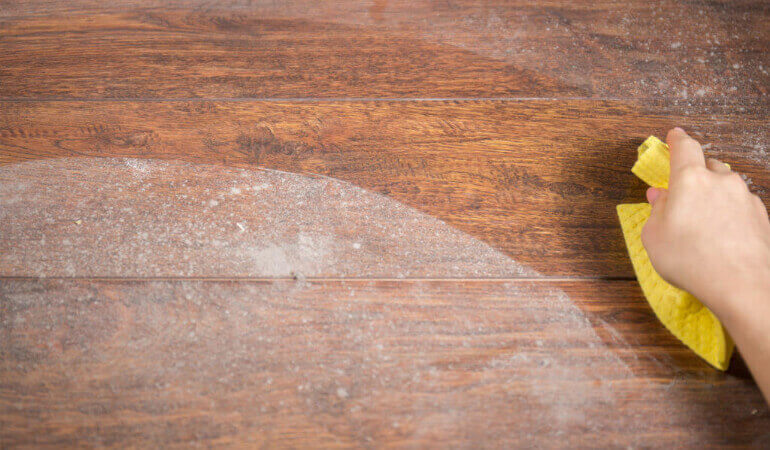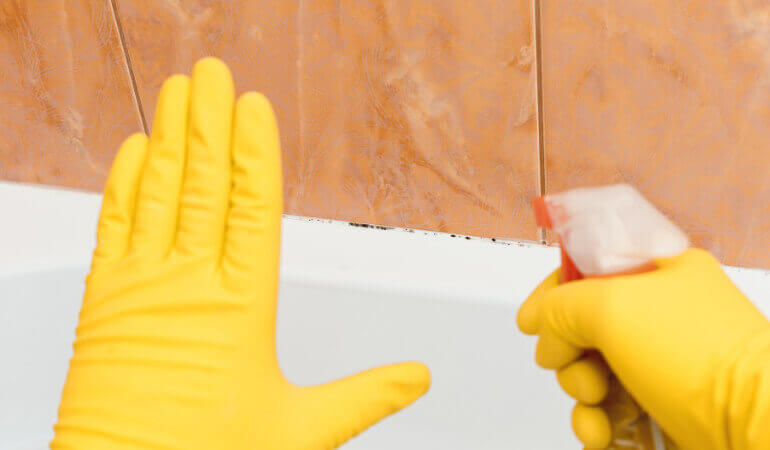

You could be making your home dustier without even realising. Follow our steps to keep dust from settling down in your home.
Where does dust come from?
60% of indoor dust comes from outside. It comes from airborne particles contained in soil, plants and animals.
Dust originates from dead skin cells, furniture, bedding and clothing. Dust can also be created by materials made of fibers.
Fuzzy Carpets and Rugs
Carpets, rugs and other floor coverings are dust magnets and dust producers. The fuzzier, the more dust they produce. You can still have carpet but choose flat-weaves and hoover regularly to prevent dust settling in the carpet. Hoovering rugs is not enough though, you should take rugs outside and shake them out too. It gets rid of unwanted clouds of dust.
Dusting Cloths
Are you dusting the ‘old school’ way using an old t-shirt? You should use microfiber for dusting because its synthetic fibers attract a lot more dust than cotton fabric. To dust tight corners and shelves use a microfiber wand duster. For tabletops and counters you can use microfiber cloth.
Not Having a Doormat
Dust and dirt particles are transferred in to your home every time a person or pet comes in or goes out. Cleaner shoes mean less dust so invest into a heavy duty doormat and wash it regularly. Even better, take your shoes off once you come in and leave them by the door. The tracked in dirt and dust will be contained in a smaller area.
Old Hoover
If your hoover is really old and outdated with old filters it doesn’t have a good suction and not picking up as much dust. Invest into a hoover that has HEPA filters which can grab really small dust particles and even pollen.
Dry Air
Dust clings to surfaces better when the air is dry. Keep the humidity in your home at about 40 – 50 percent. In winter, keep trays of water on top of radiators or use a humidifier to add water to the air.
Blinds and Curtains
When was the last time you dusted your blinds or washed curtains? Dust and dirt particles can easily blow in through the windows. Use a microstatic cloth or the dusting attachment on your hoover to dust blinds. Use a small handheld hoover for your curtains and at least twice a year take them down and launder or dry-clean.
Pillows
Pillows collect dust mites that feed on flakes of dry skin, they can cause allergic reactions. Dust mites congregate in bed linens, mainly pillows. Wash and dry your pillows frequently and replace pillows and duvet covers with new ones every year or two.
Clutter
Don’t have too much clutter on shelves unless you are willing to take them down every time you dust. Otherwise the dust settles on the objects. Curate the items carefully to make dusting easier or display them in glass door cabinets.
How to reduce dust in your home
Follow our easy hacks for keeping your home dust free.
Changing your bedding
As we mentioned above your pillows, sheets and mattresses collect dust mites. To keep dust to a minimum in your bedroom you should change your bedding once a week. To protect your mattress from collecting dust mites you can use an allergen-proof cover.
Keeping your closet tidy
You may not realise but your clothes stored in a closet shed fiber. Clothes that are not used often should be kept in garment bags, plastic containers or boxes.
Keeping your floors clutter-free
Do you keep piles of clothing, toys, magazines or books on the floor? Do you just vacuum around the piles? Don’t forget to clean the dust that keeps settling on top of the piles.
Carpets collect dust
Although carpets look great and feel great on a cold day however they are magnets for dust mites. If you have time vacuum the carpets every day, especially if you or your family members have allergies. If you have carpets in all rooms then invest in a vacuum cleaner that has a double-layered microfilter bag or a high-efficiency particulate air filter (HEPA). These will prevent dust from re-entering the air.
Stop using feather dusters
Trying to dust with feather duster will only aggravate existing dust which will just settle elsewhere. Much better way to dust surfaces in your home is to use a damp cloth or moist towelette.
Cleaning from top to bottom
You would be surprised how many people don’t know this. You should start cleaning the highest surfaces first and work your way down.
Using air purifiers
Using an air purifiers can be beneficial if you have severe allergies or asthma. Although air purifiers filter dust particles they will not get rid of dust mites so you still need to keep your home clean.
Cleaning computers and TVs
Because your computer and television is electrically charged they attract dust. Use dryer softener sheets to wipe the dust away.
Stop wearing shoes at home
80% of dust in our households comes from the bottom of shoes. Remove your shoes when you enter your home. Invest into a sturdy mat inside and outside of your home entrance. To clean the mats you can vacuum them regularly or take them outside and shake them.
Using microfiber cloths to clean
Microfiber attracts and holds dust because of its electrostatic charge. Microfiber cloths are the best tools to clean dust.
Dusting with your tumble dryer
Curtains and drapes collect dust because they absorb moisture and dirt from the outside, not only inside. Dust from ceiling can also land on your curtains and drapes. The easiest way is to buy curtains and drapes that are machine washable and wash them twice a year, more often if you live near the road or in a dusty area.
If your curtains and drapes can’t be washed in a washing machine you can use your tumble dryer. Put the curtains in the dryer together with a damp towel and then use the air dry or air fluff cycle for 20 minutes. The damp towel will catch pet hair and small particles from the curtains.
Installing roller blinds instead of venetian or wooden blinds
Although roller blinds will not completely remove dust and the need to vacuum your home and keeping it clean, they will reduce the dust in your home. They are also much easier and faster to clean and some can be even washed in the washing machine.


